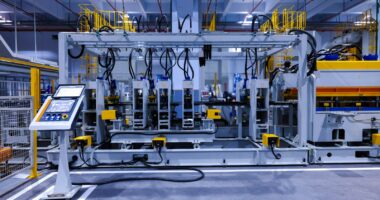Facility optimization fails when people chase trendy upgrades instead of addressing actual performance gaps. Most improvements look impressive but deliver minimal operational benefit.
Smart facility management identifies bottlenecks, prioritizes upgrades that genuinely improve performance, and implements changes systematically. The truth? Strategic improvements in the right areas outperform scattered upgrades across everything. Understanding where investment delivers maximum return separates effective optimization from expensive decoration.
Let me show you how to upgrade facilities for real performance gains, not just aesthetic improvements.
Audit Current Performance Systematically
You can’t optimize what you don’t measure. Comprehensive assessment reveals where your facility underperforms.
Evaluate all major systems: infrastructure, equipment, workflow efficiency, and space utilization. Document current performance metrics, maintenance costs, and user satisfaction. Moreover, identify specific pain points where performance falls short of requirements.
Additionally, compare your facility performance against industry benchmarks or similar operations. Where do gaps exist? What works well? That said, don’t just collect data endlessly. Focus on actionable insights that guide improvement decisions.
What’s interesting is how often facility managers assume they know problem areas without actually measuring performance objectively.
Prioritize Based on Impact and Feasibility
Limited budgets require choosing upgrades carefully. Impact-feasibility analysis focuses resources where they matter most.
Evaluate potential improvements on two dimensions: operational impact and implementation difficulty. High-impact, easy-to-implement upgrades should happen first. Moreover, consider whether improvements address root causes or just symptoms.
Additionally, assess interdependencies between systems. Some upgrades enable or enhance others, creating compound benefits. The catch? Don’t let perfect become the enemy of good. Waiting for ideal comprehensive overhauls often means never improving anything.
Frankly, incremental strategic improvements usually deliver better results than massive one-time renovations.
Address Infrastructure Reliability First
Fancy upgrades mean nothing if basic systems fail regularly. Infrastructure stability provides the foundation for everything else.
Ensure critical systems like HVAC, electrical, plumbing, and structural components function reliably before cosmetic improvements. Replace failing equipment before it breaks. Additionally, upgrade outdated systems that consume excessive maintenance resources.
For facilities facing environmental challenges, specialized infrastructure becomes especially critical. Systems like electrical heat tracing systems prevent operational disruptions in harsh conditions where standard infrastructure fails. Moreover, proper implementation maximizes efficiency while minimizing ongoing costs.
That said, infrastructure reliability doesn’t require premium everything. Appropriate quality for your specific conditions and usage matters more than maximum specifications.
Optimize Space Utilization Strategically
Wasted space represents wasted opportunity. Layout optimization improves productivity without expensive expansion.
Analyze how current spaces are actually used versus how they’re intended to be used. Where do bottlenecks occur? What areas sit underutilized? Moreover, consider whether current layouts support efficient workflows or force unnecessary movement.
Additionally, explore flexible space configurations that accommodate varying needs. Modular systems, movable partitions, or multi-purpose areas provide adaptability. Let me be honest: reconfiguring existing space often costs far less than adding square footage while delivering similar benefits.
Improve Energy Efficiency Systematically
Operating costs accumulate over decades. Energy optimization reduces expenses while often improving performance.
Start with energy audits identifying major consumption sources. Upgrade lighting to LED, improve insulation, optimize HVAC scheduling, and install programmable controls. Moreover, many efficiency improvements qualify for rebates or tax incentives that reduce net costs.
Additionally, track energy consumption continuously to measure improvement impact and identify new opportunities. That said, don’t pursue efficiency for its own sake. Focus on improvements with reasonable payback periods given your facility’s expected useful life.
The reality is straightforward: energy efficiency upgrades often pay for themselves through operating savings alone.
Enhance User Experience Thoughtfully
Facilities exist to serve people. User-centered improvements increase satisfaction and productivity.
Survey actual facility users about pain points and desired improvements. What frustrates them daily? What would make their work easier or more pleasant? Moreover, observe how people actually use spaces versus how designers intended.
For example, comfortable, functional spaces contribute significantly to overall experience. Considerations like modern outdoor furniture in appropriate areas can enhance facility appeal and usability while supporting wellness and collaboration.
Additionally, balance aesthetics with functionality. Beautiful spaces that don’t work well create frustration. Functional but uninviting spaces reduce satisfaction. The catch? User preferences vary widely. Focus on improvements with broad appeal rather than catering to individual preferences.
Implement Technology Upgrades Strategically
Technology offers powerful optimization opportunities but shouldn’t drive decisions. Purpose-driven technology solves specific problems rather than existing for its own sake.
Identify operational challenges where technology provides clear solutions. Building automation systems optimize energy use. Access control improves security. Space management software maximizes utilization. Moreover, ensure technology integrates with existing systems rather than creating isolated islands.
Additionally, consider user technical comfort levels. Sophisticated systems that confuse users deliver less value than simpler alternatives people actually use correctly. That said, don’t let current limitations constrain necessary improvements. Include training as part of technology implementation.
Upgrade Safety and Compliance Proactively
Safety issues and compliance failures create liability that dwarfs upgrade costs. Proactive compliance prevents expensive problems.
Ensure facilities meet all applicable codes, regulations, and safety standards. Address identified deficiencies before they cause incidents or citations. Moreover, exceed minimum requirements in high-risk areas where safety margins matter.
Additionally, consider how upgrades affect insurance premiums or liability exposure. Some improvements reduce risk significantly enough to justify costs through lower insurance alone. What’s interesting is how often deferred safety upgrades cost more after incidents than proactive improvements would have.
Plan for Future Flexibility
Today’s optimal layout may constrain tomorrow’s needs. Adaptive design accommodates evolution without complete overhauls.
Choose systems and layouts that allow modification as requirements change. Modular equipment, flexible infrastructure, and open floor plans provide future adaptability. Moreover, avoid permanent installations when movable alternatives work adequately.
Additionally, consider demographic or operational trends that might affect future needs. Aging populations might require accessibility features. Remote work trends might change space requirements. Let me be honest: predicting future perfectly is impossible, but building in reasonable flexibility prevents premature obsolescence.
Source Quality Within Budget Constraints
Budget limitations don’t require accepting poor quality. Value optimization finds the best possible solutions within financial realities.
Research thoroughly to identify options offering best performance-to-cost ratios. Moreover, consider phased implementation spreading costs over time while delivering incremental benefits. Additionally, explore financing options that preserve capital for other priorities.
That said, resist false economy. Cheap solutions requiring frequent replacement cost more than quality alternatives over facility lifespans. For critical systems or high-visibility areas, investing appropriately pays long-term dividends. Understanding comprehensive service options, including resources like Spectrum Health Care, helps optimize facility support systems within budget.
Compare Facility Upgrade Approaches
| Upgrade Element | Reactive Approach | Strategic Approach |
|---|---|---|
| Priority Setting | Based on complaints or failures | Data-driven impact analysis |
| Infrastructure | Fix only when broken | Proactive replacement before failure |
| Space Utilization | Accept current layouts | Optimize based on actual usage patterns |
| Technology Adoption | Latest trends | Purpose-driven solving specific problems |
| Budget Allocation | Scattered small projects | Focused investment in high-impact areas |
Manage Implementation Disruption
Upgrades create temporary disruption. Implementation planning minimizes operational impact.
Schedule disruptive work during low-activity periods when possible. Communicate plans clearly to affected users well in advance. Moreover, establish temporary accommodations for displaced activities during construction or installation.
Additionally, phase work to maintain minimum functionality throughout projects. Complete shutdowns sometimes make sense, but partial availability often serves better. The catch? Phasing extends timelines and sometimes increases costs. Balance disruption minimization with project efficiency.
Measure Results and Adjust
Upgrades should deliver measurable improvements. Performance tracking verifies value and guides future decisions.
Establish baseline metrics before improvements and track changes after implementation. Did energy consumption decrease? Has maintenance frequency reduced? Are users more satisfied? Moreover, document lessons learned for future projects.
Additionally, be willing to adjust when improvements don’t deliver expected results. Sometimes solutions work differently than anticipated or reveal new optimization opportunities. That said, give changes adequate time to stabilize before judging effectiveness. Immediate post-implementation performance often differs from steady-state results.
Build Maintenance Into Upgrades
New systems require ongoing care. Maintenance planning protects upgrade investments.
Develop maintenance schedules specific to new equipment and systems. Budget adequately for ongoing care. Moreover, train staff on proper maintenance procedures or establish service contracts with qualified providers.
Additionally, source spare parts and document vendor relationships before you need them. Emergency repairs during failures cost far more than planned maintenance. Frankly, maintenance negligence turns good upgrades into expensive headaches faster than any other factor.
The Bottom Line
Optimizing facility performance requires systematic auditing, impact-based prioritization, infrastructure reliability, strategic space utilization, and thoughtful energy efficiency improvements. Enhance user experience meaningfully, implement technology purposefully, upgrade safety proactively, plan for flexibility, and source quality within budgets. Manage implementation disruption, measure results consistently, and build in proper maintenance.
The facilities that perform best aren’t necessarily newest or most expensive. They’re the ones where managers understand specific needs, prioritize strategically, implement systematically, and maintain diligently. Their focused improvements compound into operational excellence that generic upgrades never achieve.












